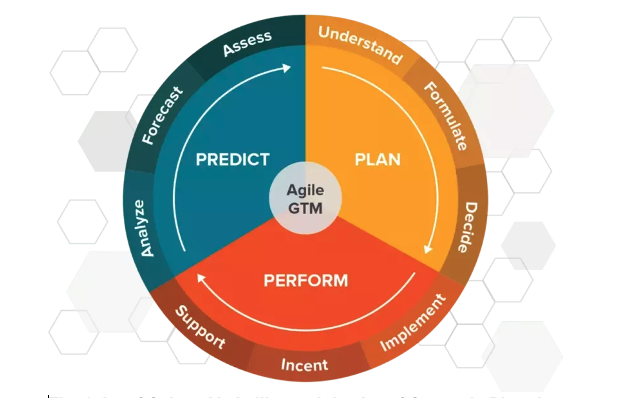
For any business, a well-thought-out annual sales plan is the foundation for achieving revenue goals and ensuring organizational alignment. It’s not just about setting quotas and targets—it’s about creating a roadmap that addresses every aspect of your sales strategy, from defining your ideal customer to allocating resources effectively.
But as businesses and technology advance rapidly, traditional plans can quickly become obsolete. Rigid adherence to outdated strategies may hinder adaptability—such as relying on face-to-face meetings for lead generation. By sticking to traditional sales methods and avoiding newer, more efficient technologies like AI-driven lead scoring or virtual sales platforms, a company may struggle to keep up with competitors who are more agile and adaptable to the digital shift, ultimately limiting growth and market share.
As market dynamics continue to evolve rapidly in 2025, strategic planning becomes even more critical. It forces organizations to anticipate potential challenges and outcomes, ensuring they are well-equipped to adapt and position their teams for success in an increasingly unpredictable landscape.
Integrating AI-driven sales performance analytics and fostering data transparency are essential for enterprises to stay agile and aligned with organizational goals—so much so that Gartner projects that by 2026, organizations that operationalize AI trust and security will see their AI models achieve a 50% improvement in terms of adoption, business goals, and user acceptance.
Here’s how forward-thinking companies can leverage these emerging, advanced tools to drive sustained growth and competitive advantage. One such solution is Graphitup, a platform that empowers businesses with AI-driven data intelligence to enhance sales forecasting, strategic planning, and performance analysis.
Defining goals and objectives through data-driven AI insights
When examining your company’s overarching goals for the year, whether its market expansion or improved customer retention—it’s important to translate these business objectives into specific, measurable sales goals.
A successful sales plan is rooted in data. By leveraging AI tools, sales leaders can analyze historical sales performance metrics, market trends, and customer behavior, to better identify opportunities and challenges. A data-driven analysis will help leaders define their ideal customer profile (ICP) and prioritize high-value opportunities.
Not only that, AI-powered predictions can estimate future sales performance based on historical data and external market trends. For example, if AI identifies a sudden market shift or new competitor product, the system could automatically suggest adjustments to goals or strategies, taking into account the activities that helped drive revenue for a company in the past.
Take segmentation and allocation to the next level
Strategic account segmentation ensures your sales teams prioritize efforts where they are most impactful. Instead of a “one-size-fits-all” approach, segment accounts based on criteria like revenue potential, key industry verticals, customer lifetime value (CLV), or buying behaviors. AI can segment customers based on behavior, demographics, and purchasing habits to target key audiences more effectively.
By using real-time data provided by advanced analytics and AI-driven insights, leaders can identify high-value accounts and match them to sales reps with the appropriate skills or expertise. With AI, teams can model multiple scenarios and adjust plans dynamically as market conditions evolve.
Conduct comprehensive capacity planning
Capacity planning is essential for ensuring a sales organization has the right number of resources to meet revenue goals. It’s important for leaders to assess factors like sales team headcount, ramp up time for new hires, and productivity expectations per rep.
AI can help streamline capacity planning by integrating sales forecasts with headcount and productivity data. This enables businesses to identify staffing needs early and align resource allocation with revenue objectives. By identifying capacity gaps, you can make informed hiring decisions, optimize sales enablement efforts, and avoid overloading your teams.
Executing for success: Turning strategy into action
Once business leaders have crafted a strategic plan, the next critical step is translating that strategy into a detailed execution plan that can be effectively carried out by their team and drive measurable results.
The executive plan should define specific sales tactics, such as personalized outreach campaigns, account-based marketing (ABM) efforts, and cross-selling opportunities. These tactics should be tailored to the target audience and designed to drive engagement at every stage of the sales funnel.
It’s also crucial to set clear and achievable milestones that reflect both short-term and long-term goals. This helps in creating a sense of urgency and accountability among sales teams, while also enabling the opportunity for regular progress assessments. Additionally, clarity in roles and responsibilities is key. Each member of a sales team should know their specific duty to the success of the overall strategy, ensuring that everyone is aligned and accountable for executing their part of the plan.
A strategic plan should not be a static document—in such a complex market, it requires ongoing adjustments to maintain relevance and effectiveness. A company could create the most data-driven, insightful strategy, but without regular checkpoints to assess performance against key metrics, identify any gaps, and pivot tactics, their efforts could be wasted. By staying agile and continuously monitoring progress, the team can prioritize the desired outcome.
Creating strategic annual plans for years to come
Creating an annual sales plan from scratch can be daunting, especially when navigating complex markets or a distributed sales team. AI tools and solutions can help simplify the process and ensure plans are grounded in best practices.
By leveraging AI, even the most complex sales planning processes become manageable, enabling sales teams to focus on execution and growth. A strategic annual sales plan isn’t just a document—it’s a company’s roadmap to success.





